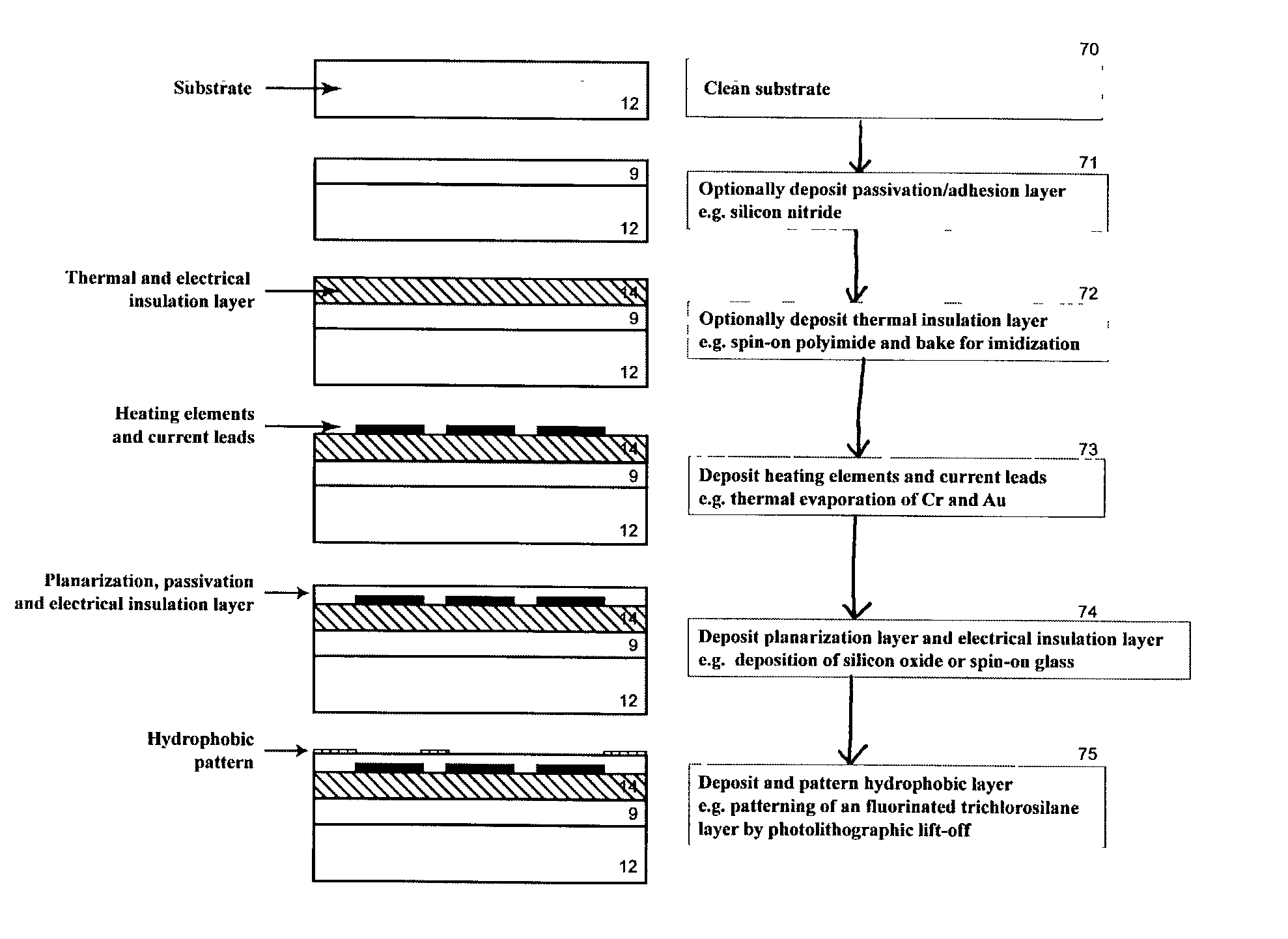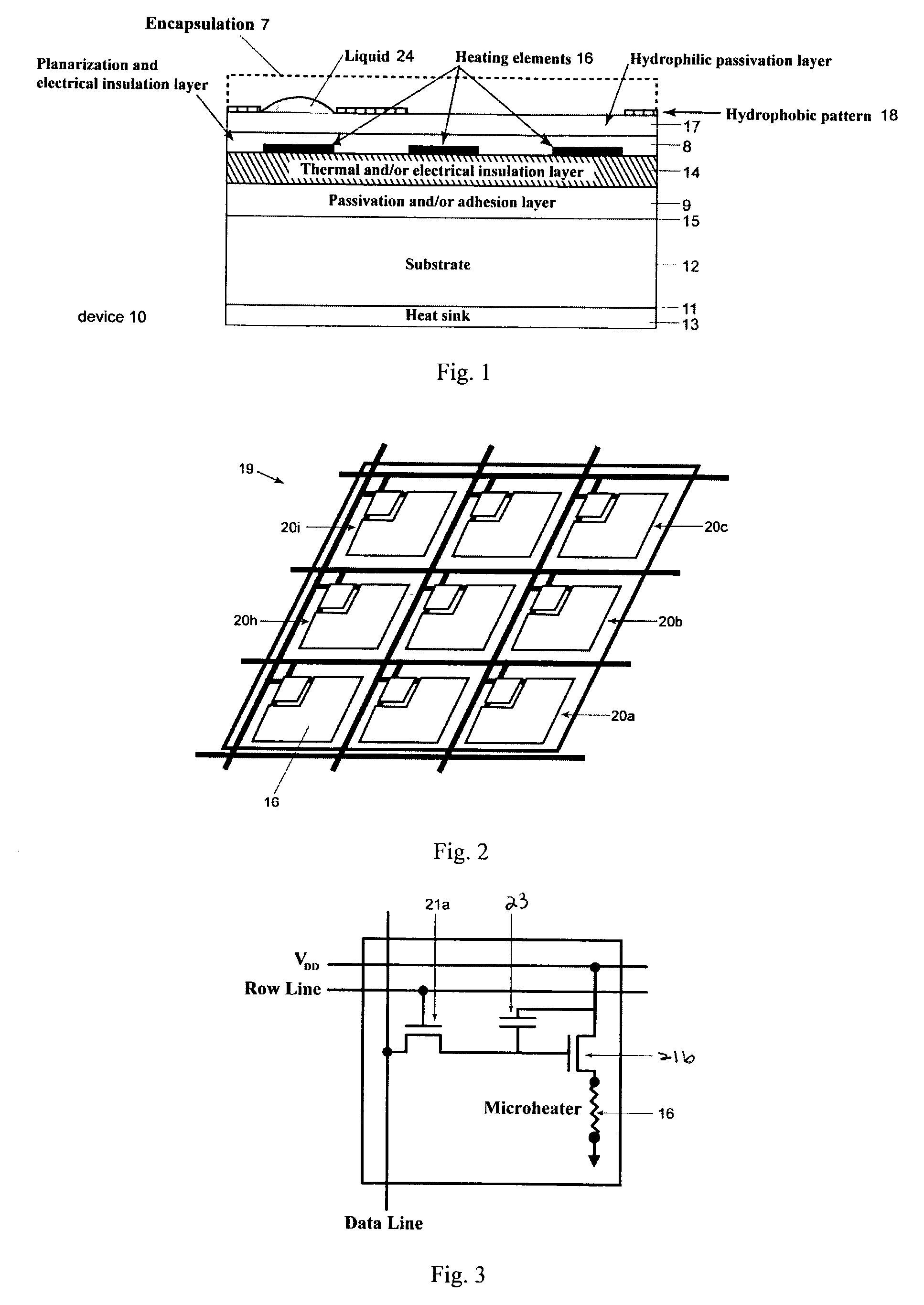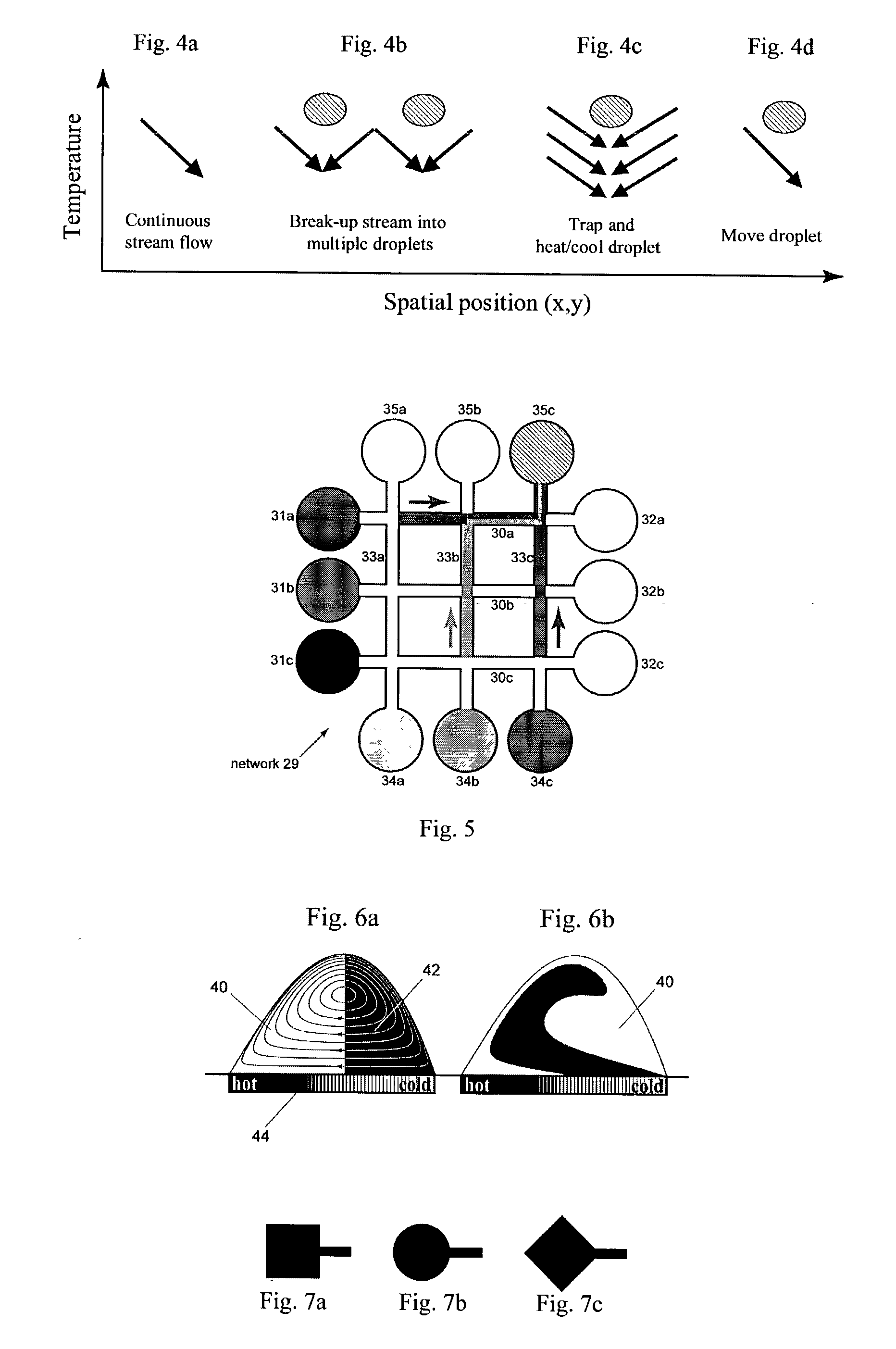Method and device for controlling liquid flow on the surface of a microfluidic chip
a microfluidic chip and liquid flow technology, applied in mechanical equipment, transportation and packaging, laboratory glassware, etc., can solve the problems of micromechanical devices with limitations, moving parts such as miniature pumps and gears, often suffering leakage and degradation under wear, electrokinetic and pneumatic techniques
- Summary
- Abstract
- Description
- Claims
- Application Information
AI Technical Summary
Problems solved by technology
Method used
Image
Examples
example i
[0078] Prototypes for the sensor device depicted in FIGS. 11a and 11b have been fabricated using the following process steps:
[0079] 1. Cutting of silicon wafers into 2-by-2 inch pieces.
[0080] 2. Cleaning of silicon samples by rinsing with or ultrasonication in tetrachlorethylene, acetone and isopropanol.
[0081] 3. Further cleaning of silicon samples by immersion into a mixture of sulfuric acid, hydrogen peroxide and deionized water at a temperature of 80.degree. C. for 20 minutes.
[0082] 4. Deposition of a 120 nm thick layer of silicon dioxide by plasma enhanced chemical vapor deposition using a Plasmatherm 790 at a temperature of 250.degree. C.
[0083] 5. Deposition of a 120 nm thick layer of silicon nitride by plasma enhanced chemical vapor deposition using a Plasmatherm 790 at a temperature of 250.degree. C.
[0084] 6. Deposition of a 120 nm thick layer of silicon dioxide by plasma enhanced chemical vapor deposition using a Plasmatherm 790 at a temperature of 250.degree. C.
[0085] 7. Sp...
example ii
[0102] Another prototype for the sensor device depicted in FIG. 1b and 1c has been fabricated using the following process steps:
[0103] 1. Cutting of silicon wafers in 2-by-2 inch pieces
[0104] 2. Cleaning of silicon samples by rinsing with or ultrasonication in tetrachlorethylene, acetone and isopropanol
[0105] 3. Further cleaning of silicon samples by immersion into a mixture of sulfuric acid, hydrogen peroxide and deionized water at a temperature of 80.degree. C. for 20 minutes.
[0106] 4. Spin-coating of a layer of photoresist (AZ5214 at 4000 rpm for 40 seconds), exposure to UV radiation in a Karl Suess MJB3 mask aligner with a photolithographic mask for straight parallel hydrophilic channels and development of the photoresist using Clariant 400k developer
[0107] 5. Immersion of sample in a dilute (1 mM) solution of 1H,1H,2H,2H-perfluorooctyttrichlorosilane in dodecane for 5 ml.
[0108] 6. Removal of sample from solution and sonication of sample in dodecane for 1-5 minutes.
[0109] 7. Sam...
example iii
[0119] A prototypes for the microfluidic routing device depicted in FIG. 1a has been fabricated using the following process steps:
[0120] 1. Cleaning of a 2-by-2 inch piece of Corning 1737 glass with a thickness of 0.7 mm by rinsing with (or ultrasonication in) tetrachlorethylene, acetone and isopropanol.
[0121] 2. Further cleaning by immersion into a mixture of sulfuric acid, hydrogen peroxide and deionized water at a temperature of 80.degree. C. for 20 minutes.
[0122] 3. Spin coating of a layer of photoresist (AZ5214 at 4000 rpm for 40 seconds), exposure to UV radiation in a Karl Suess MJB3 mask aligner with a photolithographic mask for the heating electrodes and development of photoresist using Clariant 400k developer.
[0123] 4. Evaporation of 120 nm thick layer of Ti, a 100 nm thick layer of Au and a 5 nm thick layer of Cr using a Denton electron beam evaporator
[0124] 5. Removal of resist by immersion into acetone, which leaves the desired metal heater and contact pads on the surfac...
PUM
 Login to View More
Login to View More Abstract
Description
Claims
Application Information
 Login to View More
Login to View More - R&D
- Intellectual Property
- Life Sciences
- Materials
- Tech Scout
- Unparalleled Data Quality
- Higher Quality Content
- 60% Fewer Hallucinations
Browse by: Latest US Patents, China's latest patents, Technical Efficacy Thesaurus, Application Domain, Technology Topic, Popular Technical Reports.
© 2025 PatSnap. All rights reserved.Legal|Privacy policy|Modern Slavery Act Transparency Statement|Sitemap|About US| Contact US: help@patsnap.com



